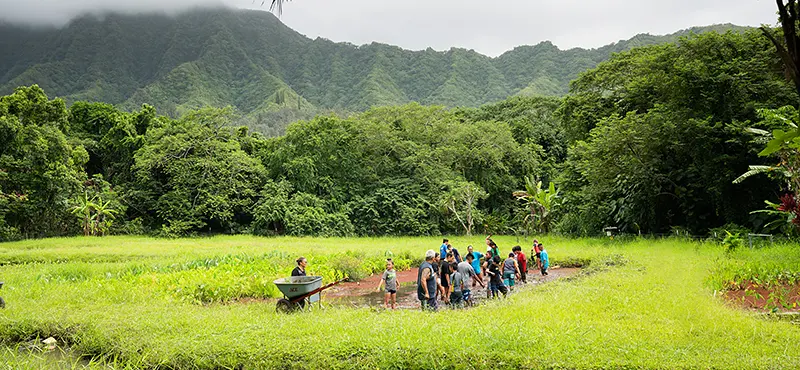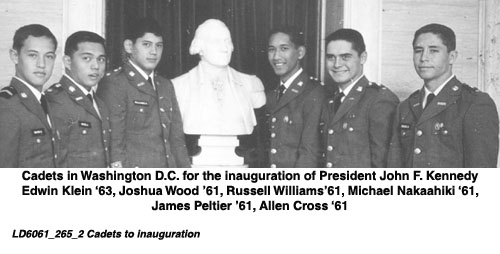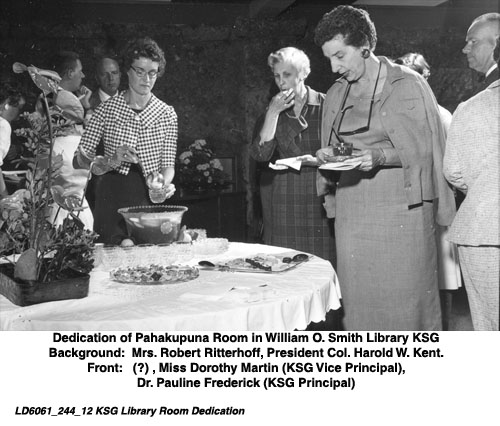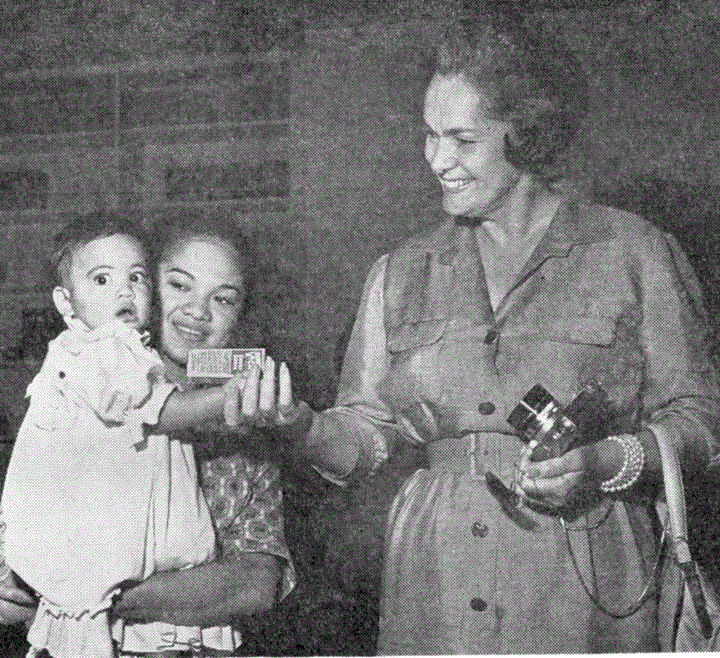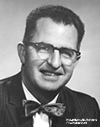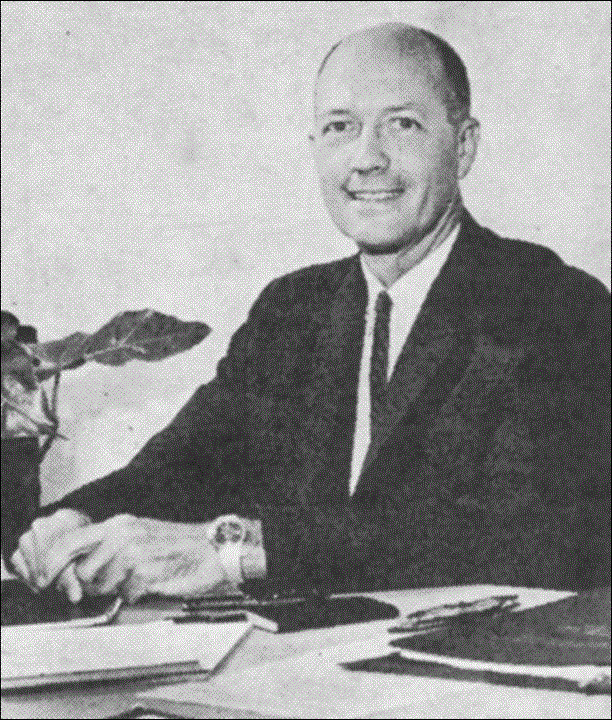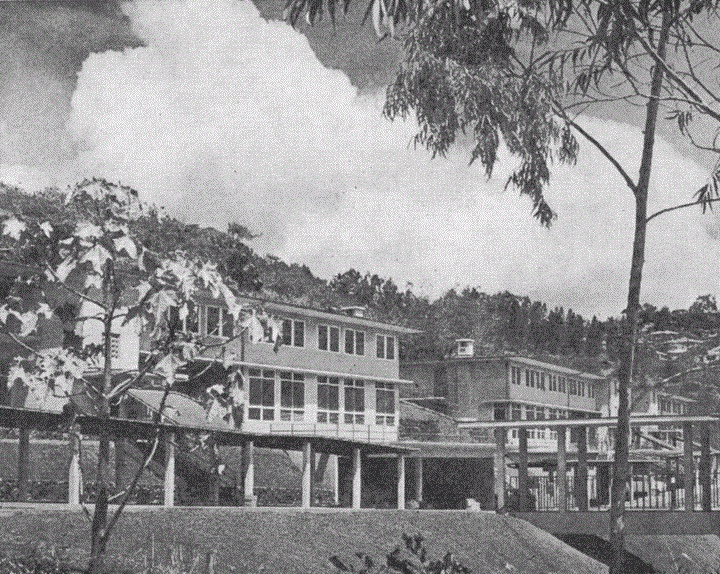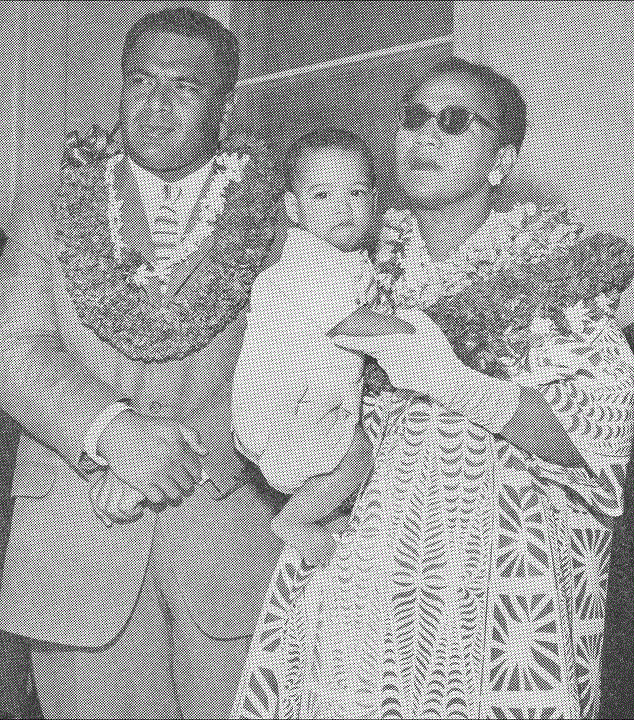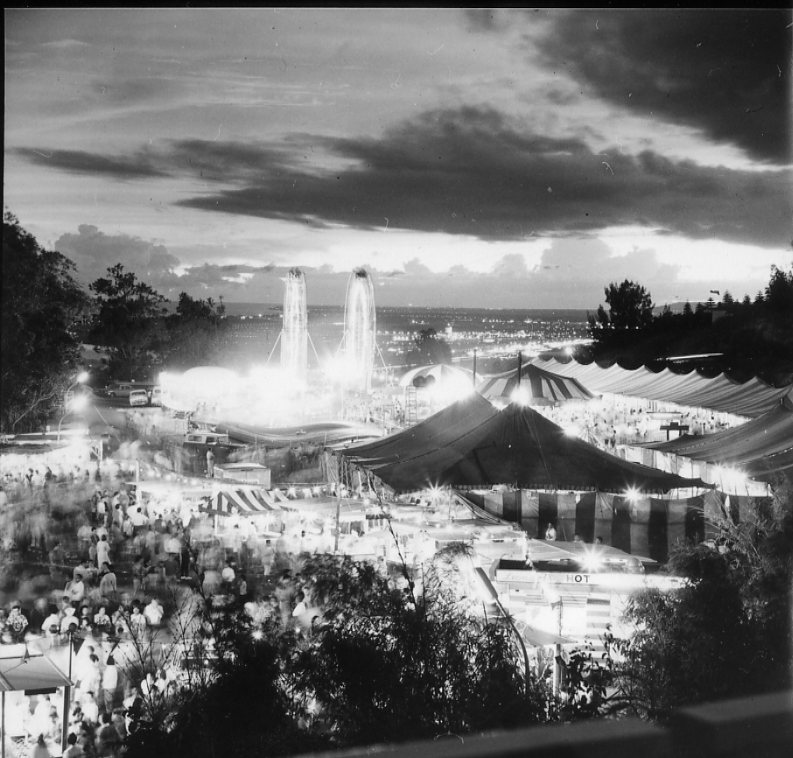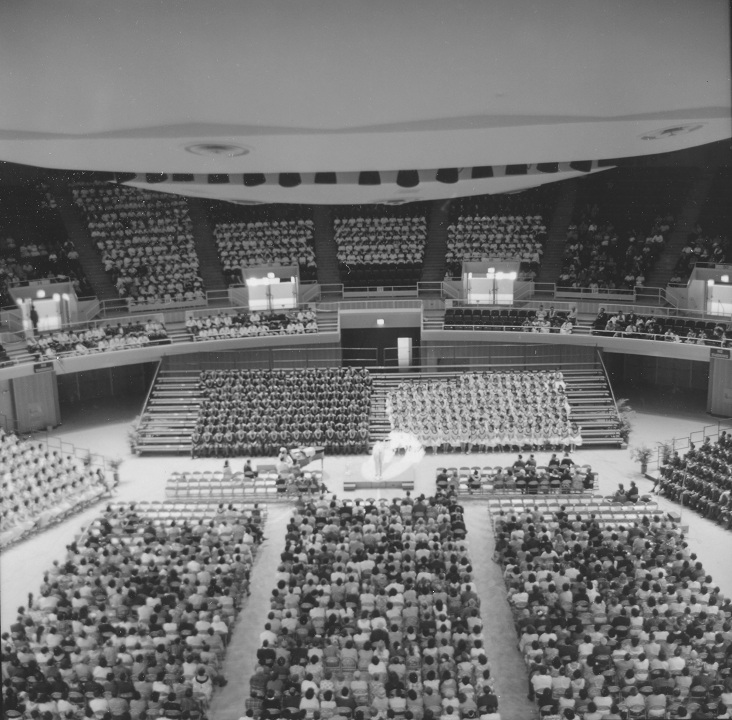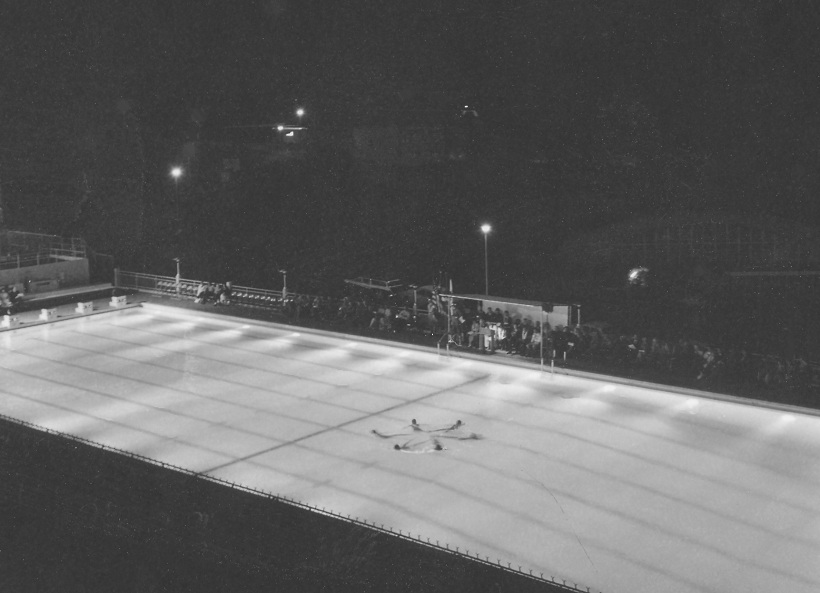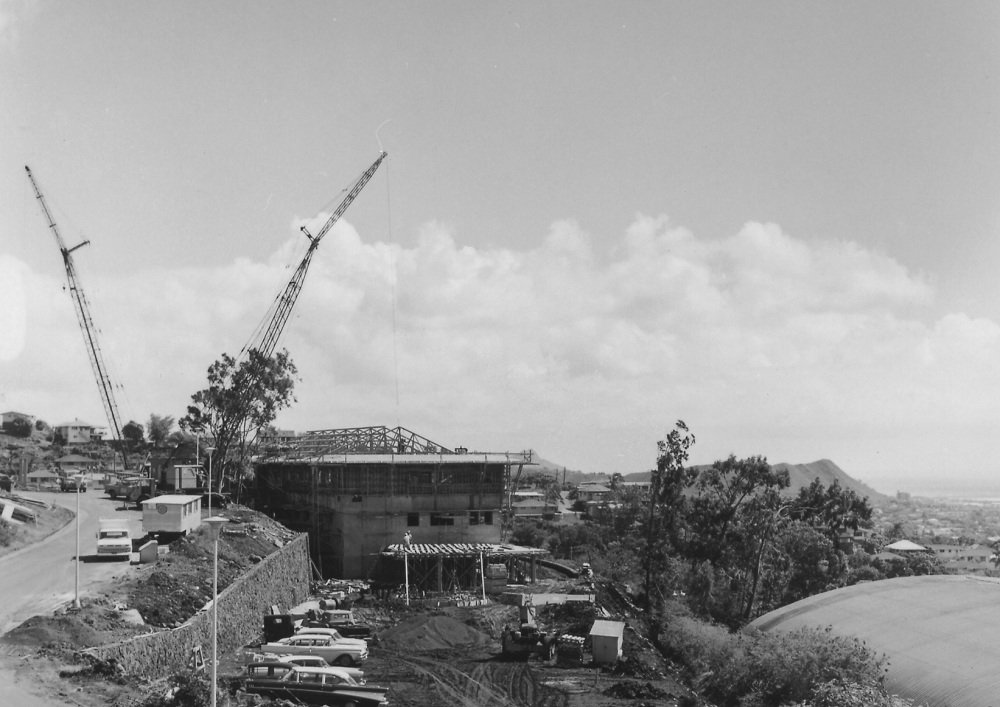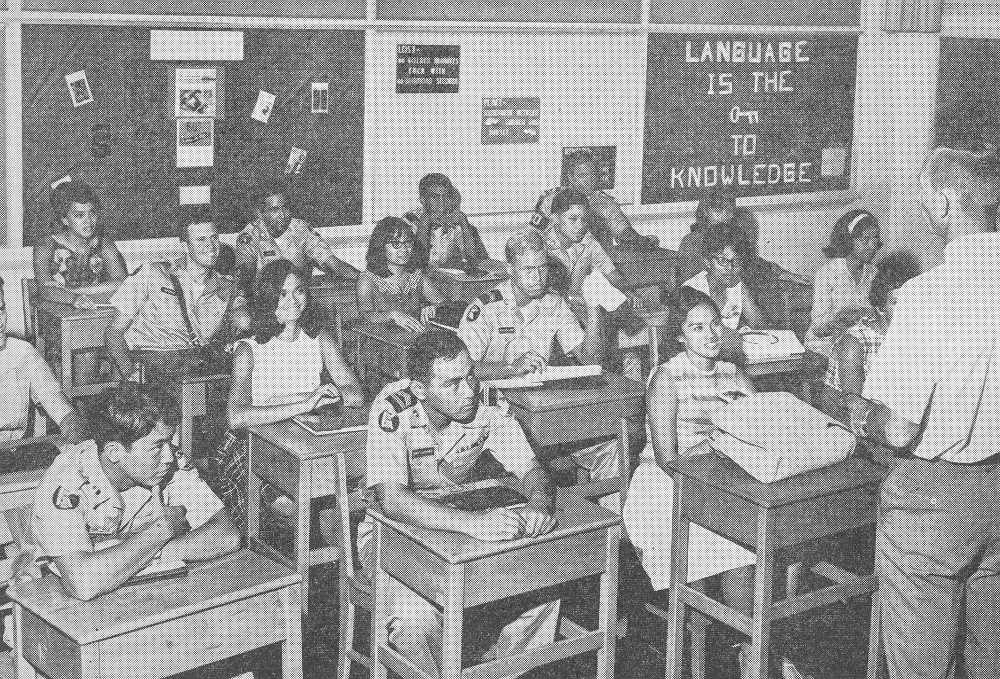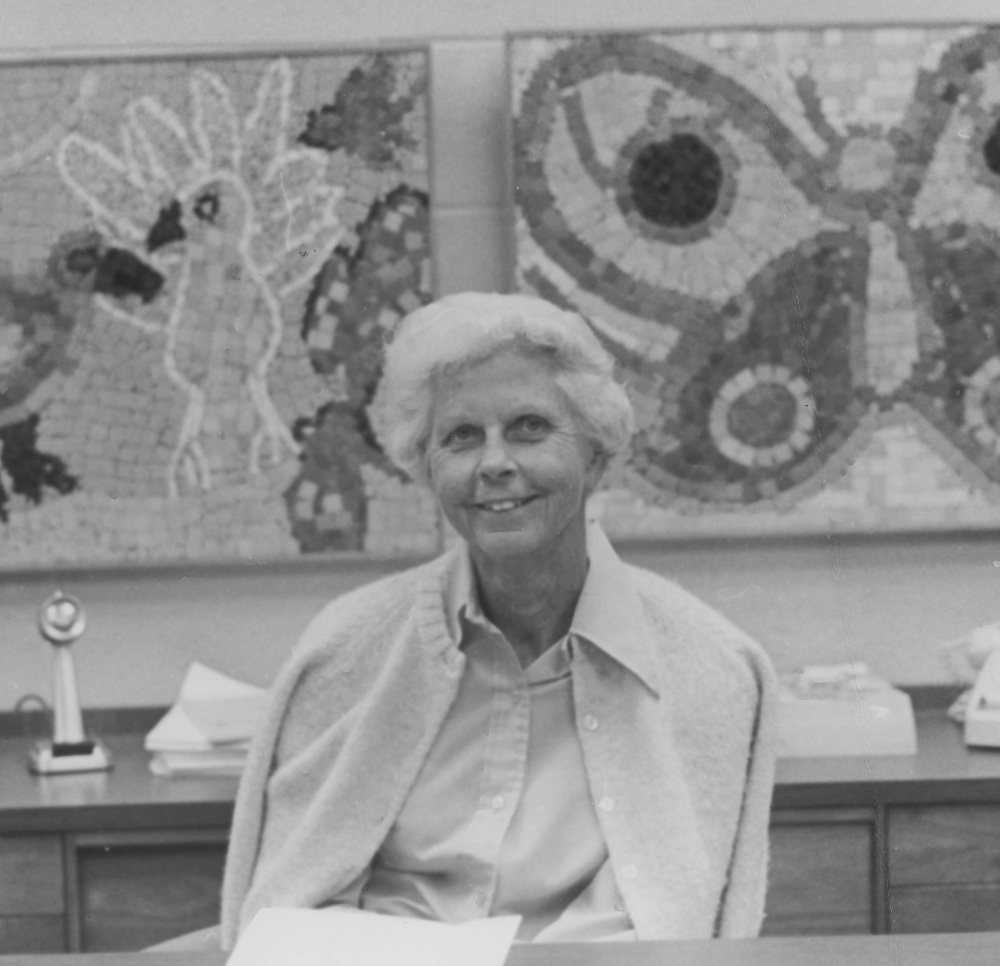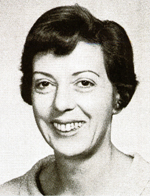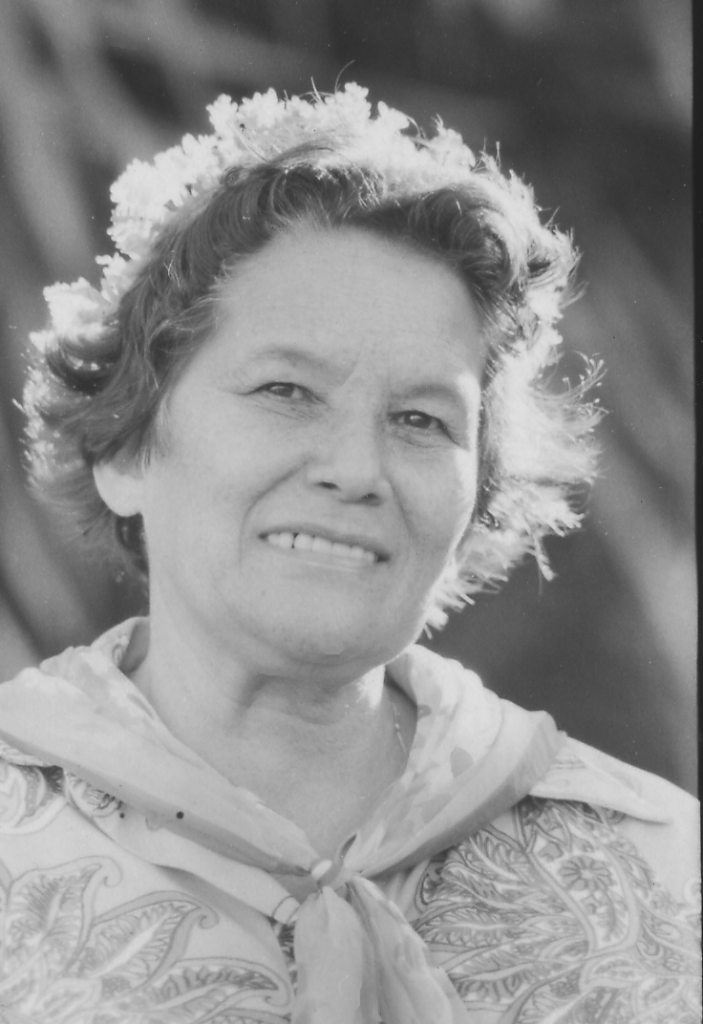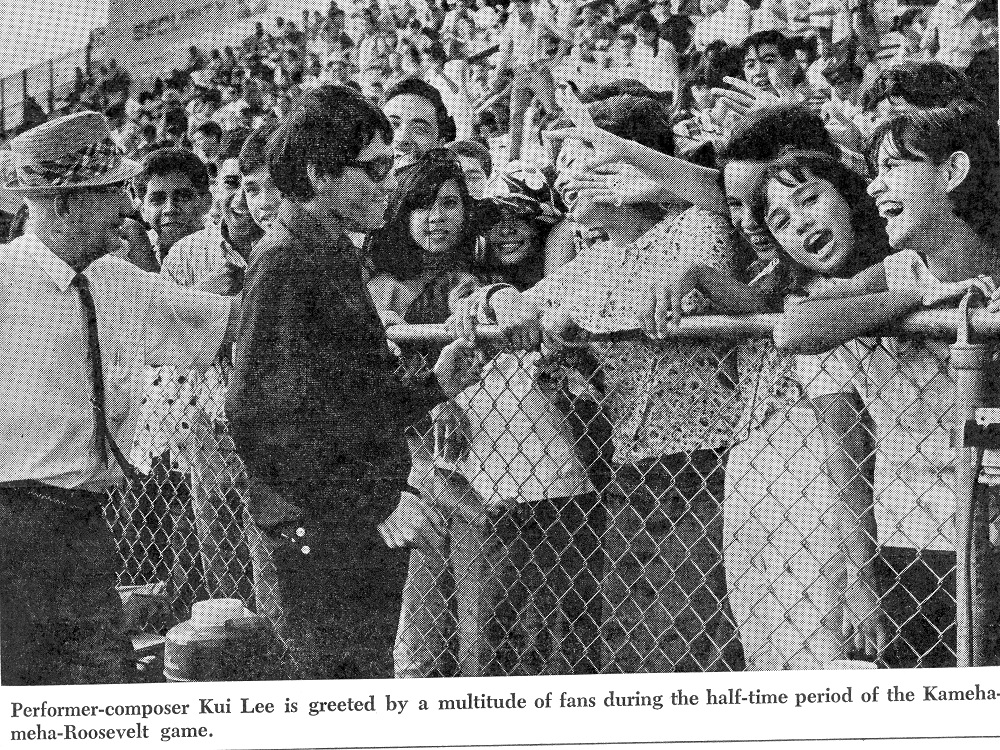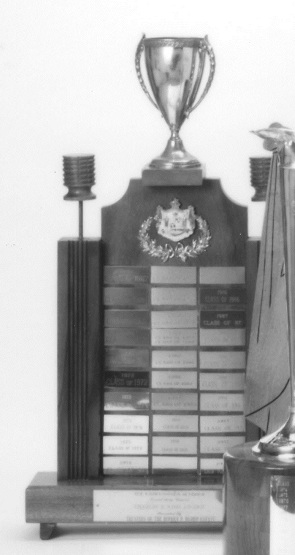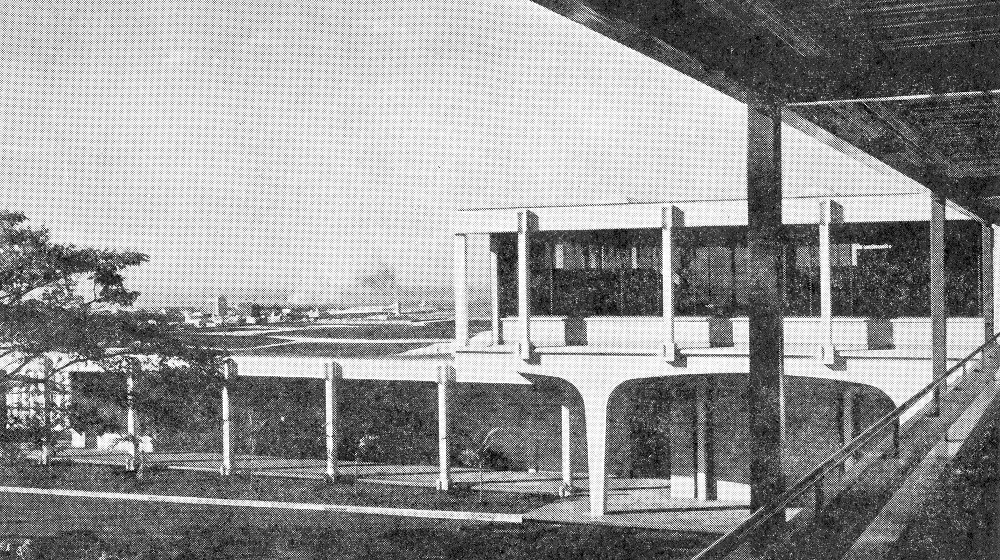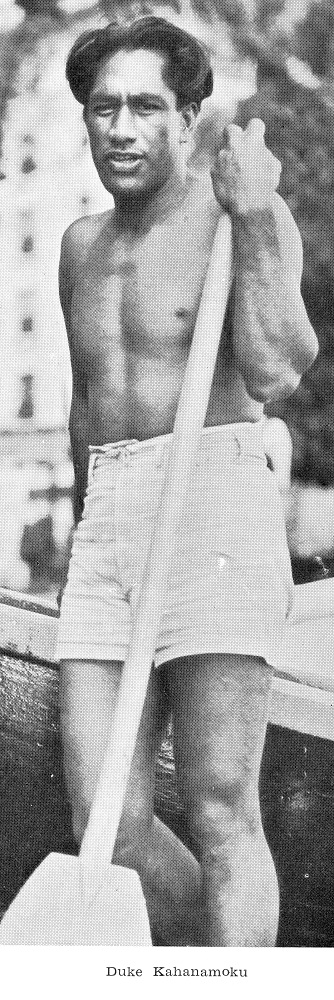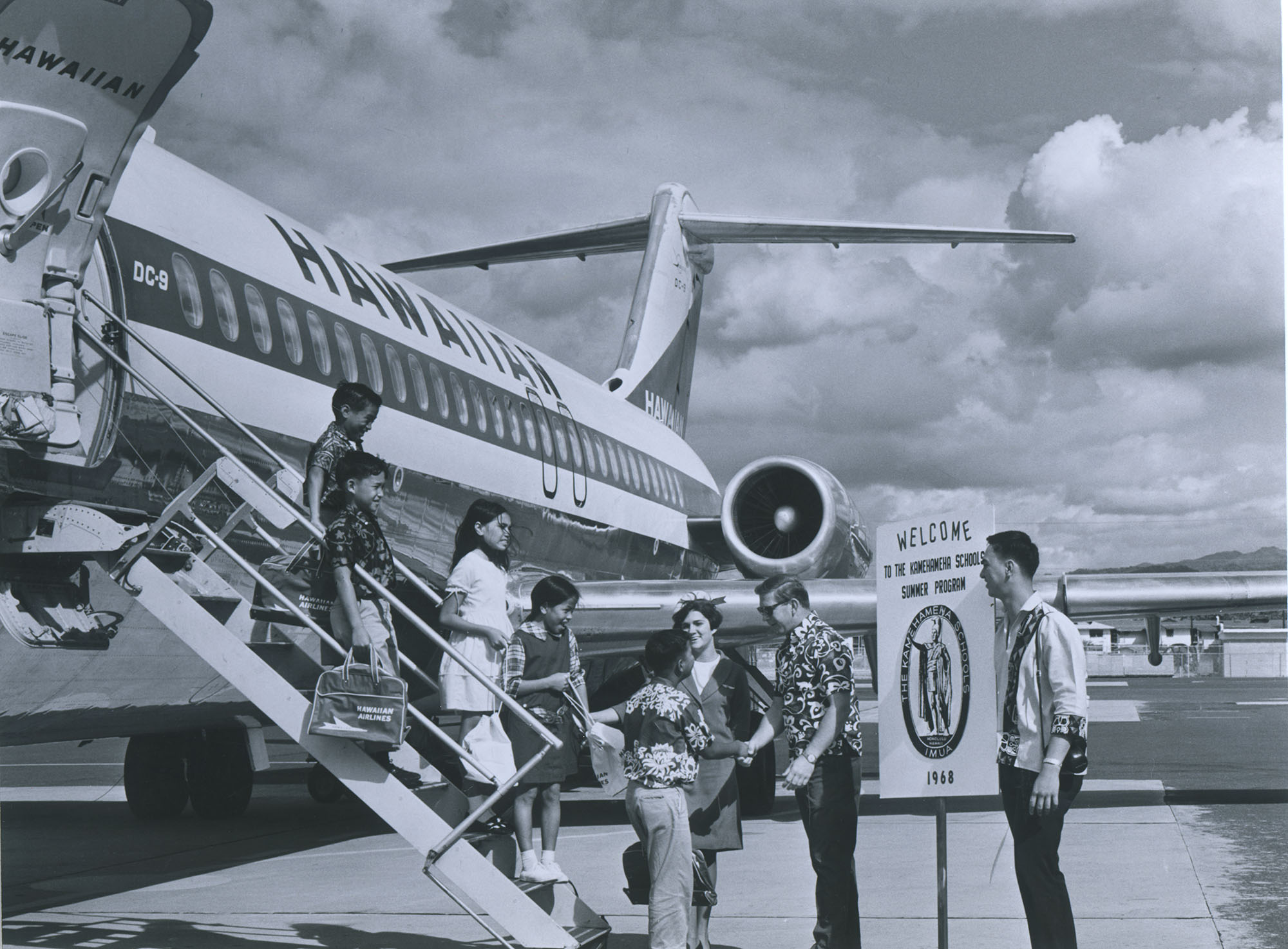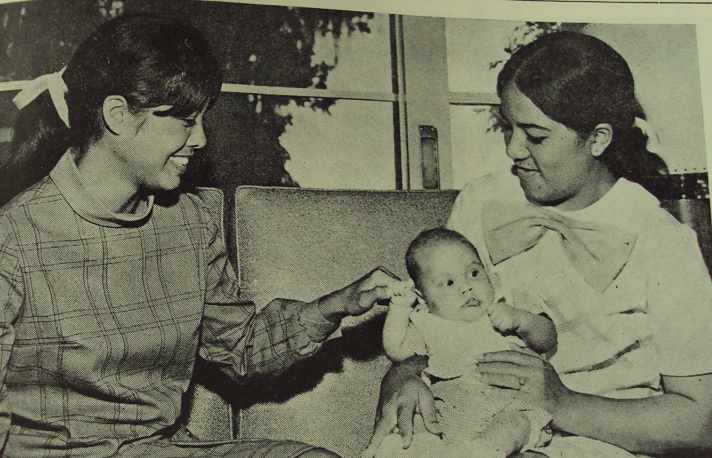Timelines
1960s
The 1960s continued the major construction begun in the 50s. It was an era of “stretching, reorganizing, and extending” beginning in the early 1960s.
January 20, 1960
The Kamehameha Band, Color Guard and a Marching Unit from the Boy’s School represent the school at John F. Kennedy’s Presidential Inaugural Parade. The group, totaling 101 in all, was asked by Hiram Kamaka, chairman of Hawaii’s representation to the parade.
June 1960
Mrs. Lela Brewer retires as KSPD Principal after 17 years.
A record number of new faculty members start in the 1960-61 school year. 50 staff members spread across the preparatory, girl’s, and boy’s school campuses are ready to instruct the greater number of students enrolled.
November 4, 1960
PAKI HALL DEDICATION – a 28 room classroom building is designed by Harvard educated and world-renown architect, THEODORE VIERRA, KSB 1919.
December 21, 1960
KSG Library addition opened with a dedication ceremony and tea.
1961
Kamehameha Press publishes 1000 copies of Ruling Chiefs of Hawaii by Samuel M. Kamakau. A March 24 Ka Moi article tells us that Mr. Kamakau lived from 1815 to 1876, and that the book gives the history of Hawai’i from the time of the great Chief Umi to the death of Kamehameha III in 1854. The work was translated into English by a group of Hawaiian scholars, one of whom was Mary Kawena Pukui. This was the book’s first printing.
The Begum Aga Khan pays a visit to Kamehameha Schools on April 27th and enthralls all she comes in contact with. She is warm and genuine, and is charmed by the islands, its people and its music. A former French model, the Begum Aga Khan stood nearly six feet tall and was very chic.Pictured above, she bestows some of her charm on Lorrie, the baby at senior cottage.
1962
DR. JAMES BUSHONG comes to Kamehameha to take up the position of President of the Schools October 16th.
DR. WILLIAM FORCE is appointed to the newly created position of vice president in charge of administration by the Trustees.
The Preparatory dorms are ready for 7th graders as the new school year begins. Kahaopulani and Nae’ole dorms are later renamed Maude Post and Alice Knapp. October 1st, the 8th grade dorms are ready, and are named Kaiulani and Kekuaiwa. The million-dollar buildings are designed by Theodore Vierra KSB 1919.
1963
March 1963
HIS ROYAL HIGHNESS PRINCE TUIPELEHAKE AND PRINCESS MELENAITE visited Kamehameha Schools during a short stop-over in Honolulu on their way to England. The Prince was the youngest son of Her Majesty Queen Salote Tubou, Honorary Dame Commander of the Order of the British Empire. Prince Tuipelehake’s older brother was the Crown Prince of the Kingdom of Tonga, a British Protectorate.fire dance 1 The Royal couple are pictured here (right) with the Senior Cottage baby Eliot Huihui.
JUNE 2, 1963
5 o’clock pm Kamehameha Class of 1963 will graduate Three hundred and one seniors–the largest in the history of Kamehameha to that date.
September 21, 1963
KAMEHAMEHA SCHOOLS ADVISORY COUNCIL – The council will consult and advise the Trustees and the President and will be invited to comment upon a wide range of issues concerning the Schools. Dr. Thomas Hamilton, President of U.H., and Mr. R. Burl Yarberry, public schools superintendent and 24 local members as well as select members from the continent.
1964
January 28, 1964
Hui Oiwi club members participate in the opening of the Kahala Hilton Hotel.
March 6 & 7, 1964
The first Kamehameha Karnival is held, with E.K. Fernandez rides, games, and a Tom Moffat Show as top attractions (award winning photo by KSB ’65 graduate Bruce Lum ).
April 17, 1964
Honolulu International Center construction is finished in time for the annual song contest. Kamehameha Schools holds the contest there for the first time at 7:30 pm. Approximately 8,000 people were in the audience and the evening started with community singing led by Mr. Daniel Akaka, President of the Kamehameha Schools Alumni Association. Judging the event were, Dr. Norman Rian, Chairman of the U.H. Music Dept., Dr. Leon Burton, former bandmaster at Kamehameha then band and orchestra director at Roosevelt, Miss Beatrice Yoshimoto, Choral and Music director at Roosevelt, Mrs. Eunice De Mello, U.H. Voice teacher, Mrs. Dorothy Kahananui, Asst. Professor at U.H. and teacher at Kamehameha Schools.
May 1, 1964
Princess Ruth Ke’elikolani Pool is dedicated at 7:30pm (below). The Kamehameha Schools band played an interlude, the preparatory department choir sang, the girl’s school glee club performed, and the boy’s school glee club also sang. Reverend Abraham Akaka delivered the invocation, while Edwin P. Murray, Trustee, Dr. Bushong, school president, and Theodore Vierra KSB 1919 the pool’s architect, deliver remarks. Reverend Mersberg assists with the lei ceremony which preceded the first dip made by former Olympic champions Duke Kahanamoku, Bill Smith Jr., Ford Konno, Keo Nakama, Joseph Balmores, and Halo Hirose. The Punahou School water ballet team also showed synchronized swimming techniques at the ceremony.
August 1964
The Pauahi administration building is dedicated (under construction in photo).
1965
January 1965
Trustees announce a Kamehameha Schools tuition hike. Fees for the following school year, 1965-66, will almost double.
| |
Curent |
New |
| KSG |
$68.80 |
$135.30 |
| KSB |
$78.80 |
$145.30 |
| KSPD |
$56.30-76.30 |
$122.30-141.30 |
KSPD will also be divided into 2 sections: Elementary division K-6, and Intermediate division 7th & 8th grades.
SENIOR COTTAGE–This year, in an effort to transition into a college preparatory focus, the senior cottage becomes an elective. Kamehameha girls can opt out of the program for the first time.
February 3, 1965
Dr. Donald Kilolani Mitchell asks Trustees for, and is granted, permission for the students to perform standing hula.
March 5, 1965
In its 44th year, Song Contest this year will eliminate the singing of a prize song by each class. Instead, classes will only sing one mele for their choice song.
May 19, 1965
Kamehameha Schools selects its first group of female cheerleaders. The interested girls performed before classmates, and elections were held afterwards. The girls were selected on the basis of their ability to lead a crowd, vitality, confidence, and vigor. Those chosen for cheer leader include: Anita Brissette, Haunani Judd, Francine Lavilla, Sarah Miles, Betty Mae Mansfield, and Rosemarie Bovino (below with Kimo Kahoano).
1966
KAMEHAMEHA CURRICULUM UNIFICATION–Dr. John Helfrich, the KS Director of Education cites several benefits to coeducation: “Coeducation makes possible a departmental arrangement of teachers in one area. This aids in decreasing duplication of materials…increases communication between members of a particular department and between students and faculty…one obvious reason is for the exchange of views between boys and girls in classroom discussion.” (Ka Moi Sept. 17, 1965)
September 1966
Now that the KSPD is divided into two separate divisions, there are now two new principals. Miss Marian Welz becomes the principal for K-6, while Miss Diana Lord is chosen acting principal for 7th and 8th grades.
WINONA BEAMER KSG ’41 is responsible for adding the first Ho’ike of hula and mele to the Song Contest program from the Hawaiian ensemble. The freshman class also joins the other classes for the all grades portion of singing for the first time.
December 3, 1966
Beloved composer/musician Kui Lee dies after a battle with cancer of the lymph glands. He attended Kamehameha and graduated from Roosevelt.
1967
March 1967
Song contest adds a new award this year for combined class song. The Charles E. King award was given by Trustee Richard Lyman, a tradition that would continue until almost the end of the 20th Century.
April 22, 1967
The new Elementary division building, Kamamalu, is dedicated. Considered to be ultra-modern for its time, the building rivaled the most advanced educational facilities in the United States. “There are 10 wall-to-wall carpeted classrooms…The rooms are six-sided, few having 90 degree angles, and arranged into clusters of modules…each surrounding a multipurpose room. The construction of the rooms allows for all of the classes to open into each other, an arrangement which will be conducive to different methods of teaching.” (Ka Moi)
HENRY KAISER–Leases land at Kuapa and Maunalua fishpond and develops residential Hawaii Kai. “Henry Kaiser was the prototypical Mainland outsider who comes to Hawaii, tells people how to do business while not following the existing rules,” says DeSoto Brown, collections manager at the Bishop Museum. “In his case, that put him in direct conflict with the kamaaina elite of the Big Five and Walter Dillingham. Many others had tried to break their monopolies before, but Kaiser was the first person to kick in the door in a very big way.”
The Bishop Estate and other private landowners are adversely affected when the State legislature passed the Land Reform Act (Hawai’i Revised Statutes, Chapter 516) which permits residential leaseholders to purchase the land under their homes through the State’s power of condemnation. Bishop Estate land holdings shrink but cash revenues rise.
The U.S. Internal Revenue Service (IRS) allows the creation of subsidiaries by the Bishop Estate to develop its lands.
1968
December 1968
The Christmas Concert moves to the Honolulu International Concert Hall and opens to the public free of charge.
January 22, 1968
DUKE KAHANAMOKU–Olympic great, Sheriff of Honolulu, and ambassador for Hawai’i, passes away January 22. From an In Memoriam piece in Ka Moi: “Duke Paoa Kahanamoku was laid to rest on a gloomy Saturday afternoon with all the glory that befitted a great man…As the press boat, Leilani, sailed from its mooring at Kewalo Basin to the crowded waters off Waikiki, the beaches, black with people, gradually became more apparent.” Kahanamoku briefly attended Kamehameha somewhere in the years around 1904-1908. In 1959, Harold Kent awarded Kahanamoku a diploma, making him an official alumni.
March 15, 1967
The 46th annual Song Contest is televised live and in color on KHVH channel 4 at 7:30pm. As many as 200,000 viewers are anticipated.
Summer 1968
Kamehameha Schools sponsored its first one-week Explorations in Hawaiian culture program begins in the summer with 928 post-fifth graders. Mr. Sorensen, program coordinator, greets some of the first neighbor-island keiki as they deplane.
1969
HUNG WO CHING, PhD., is the first Trustee appointed to a limited term with the mandatory retirement age of 70.
KALENDARS for sale–The sale of Hawaiian calendars replaces the Kamehameha Karnival as the fundraising activity for scholarship funds. Important dates in Hawaiian history are noted and the names of months and days are written in Hawaiian. Mr. Mahikoa and Mr. Darvill remind the students that, while fun, the Karnival was not fulfilling it purpose.
SENIOR COTTAGE–Former babies are now old enough to care for the current babies. Nalei Kanoho and Jeneral Zoller were babies at the senior cottage during the 1951-52 school year, and are now taking their turns at the senior cottage caring for baby Douglas Lewis Richardson, who comes to Kamehameha weighing 13 pounds at 2 months old, and with a cry that can be heard all over the place! (Ka Moi, below)
April 16, 1969
The U.S. Internal Revenue Service (IRS) grants the Bishop Estate tax-exempt status as an educational institution according to section 501(c) (3) of the Tax Code.








